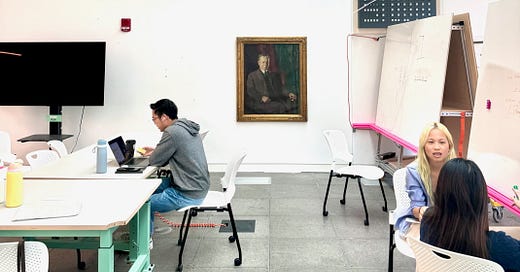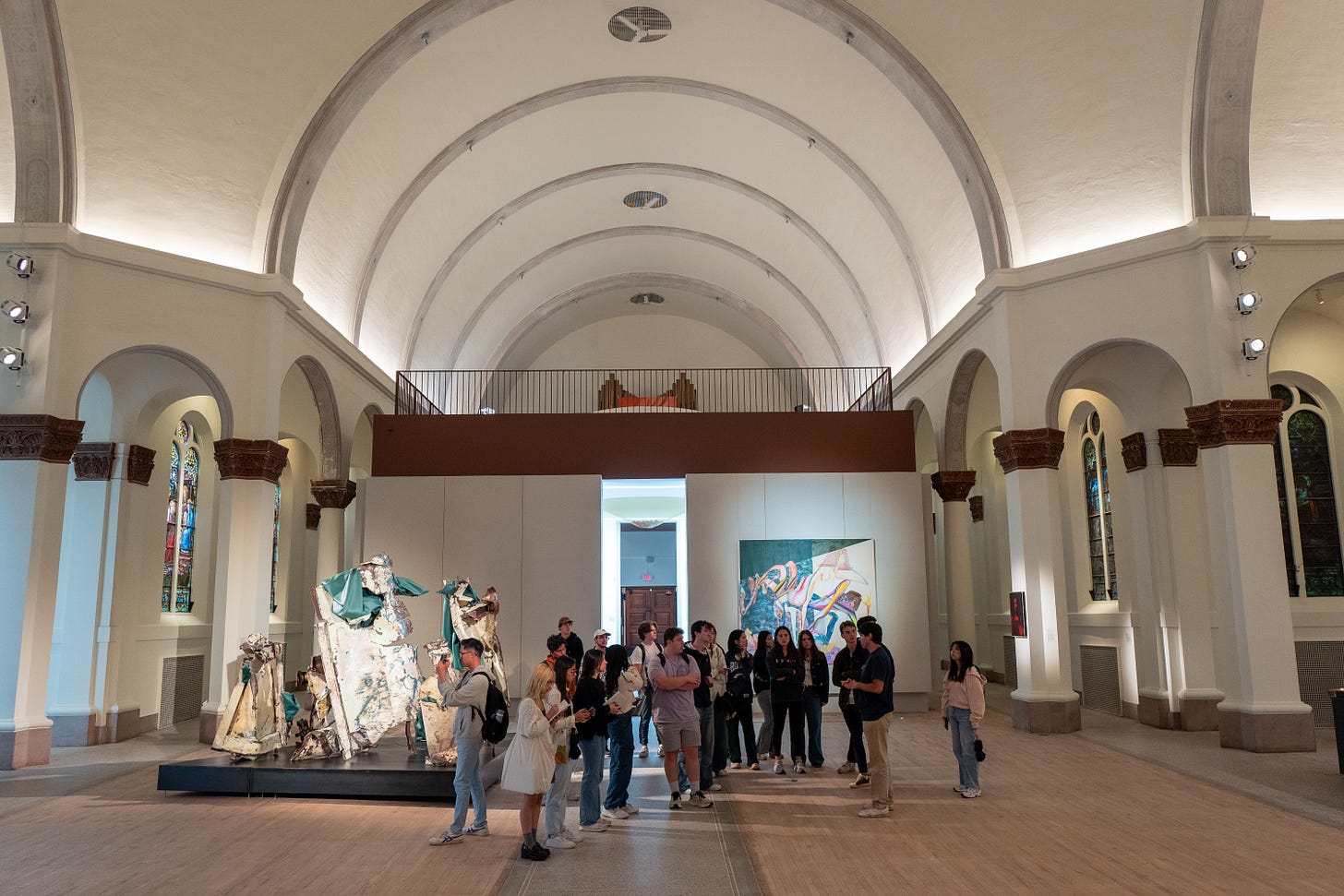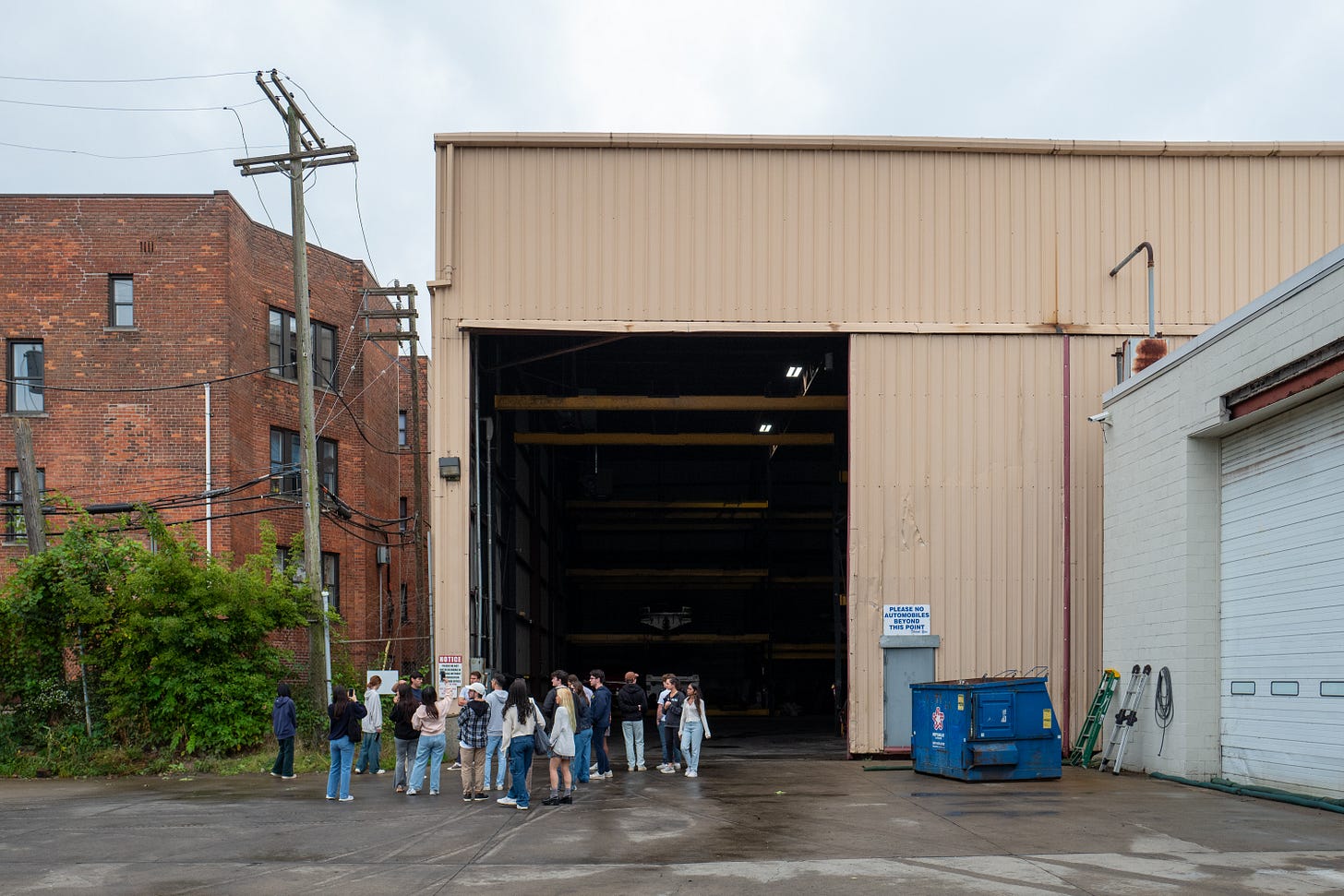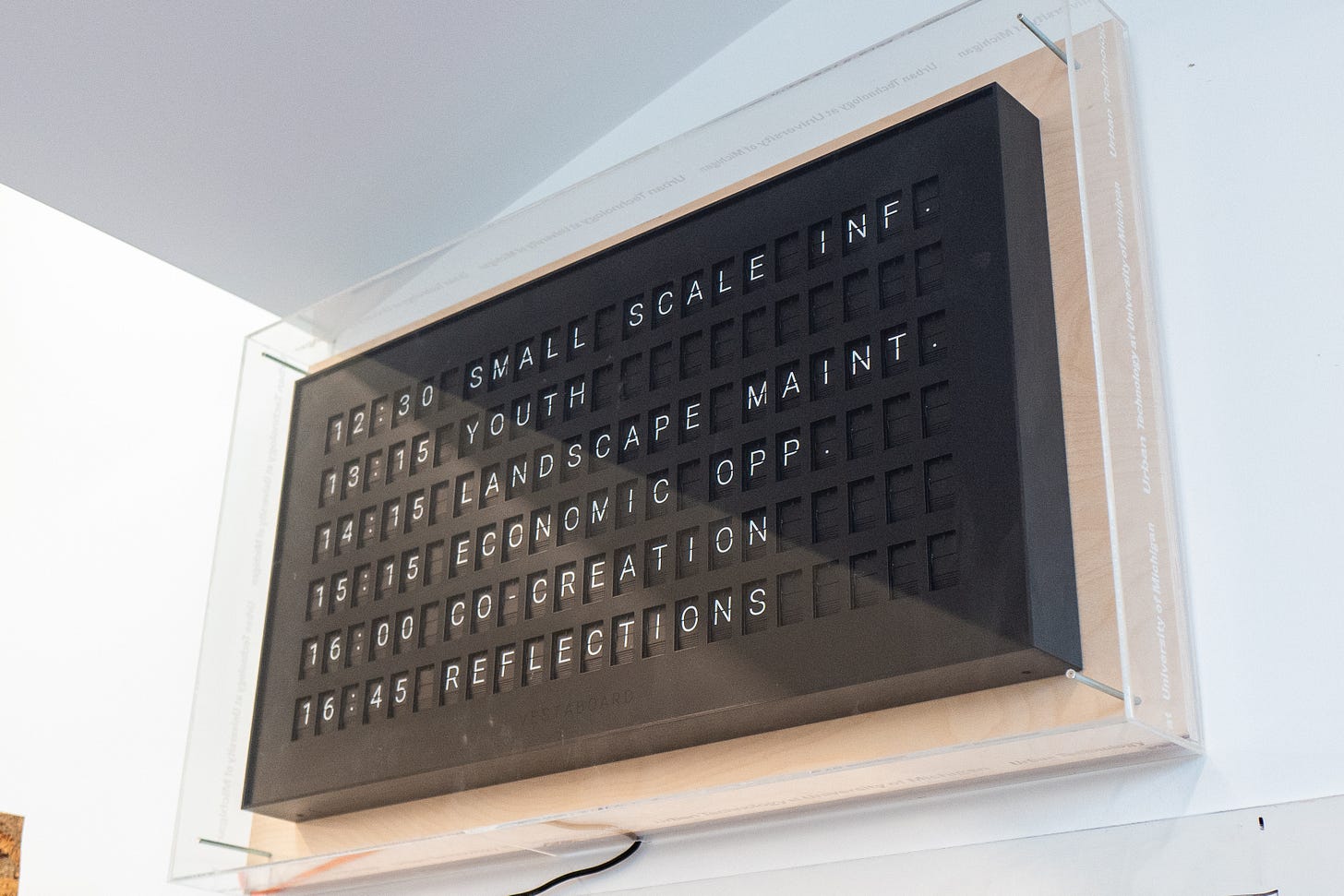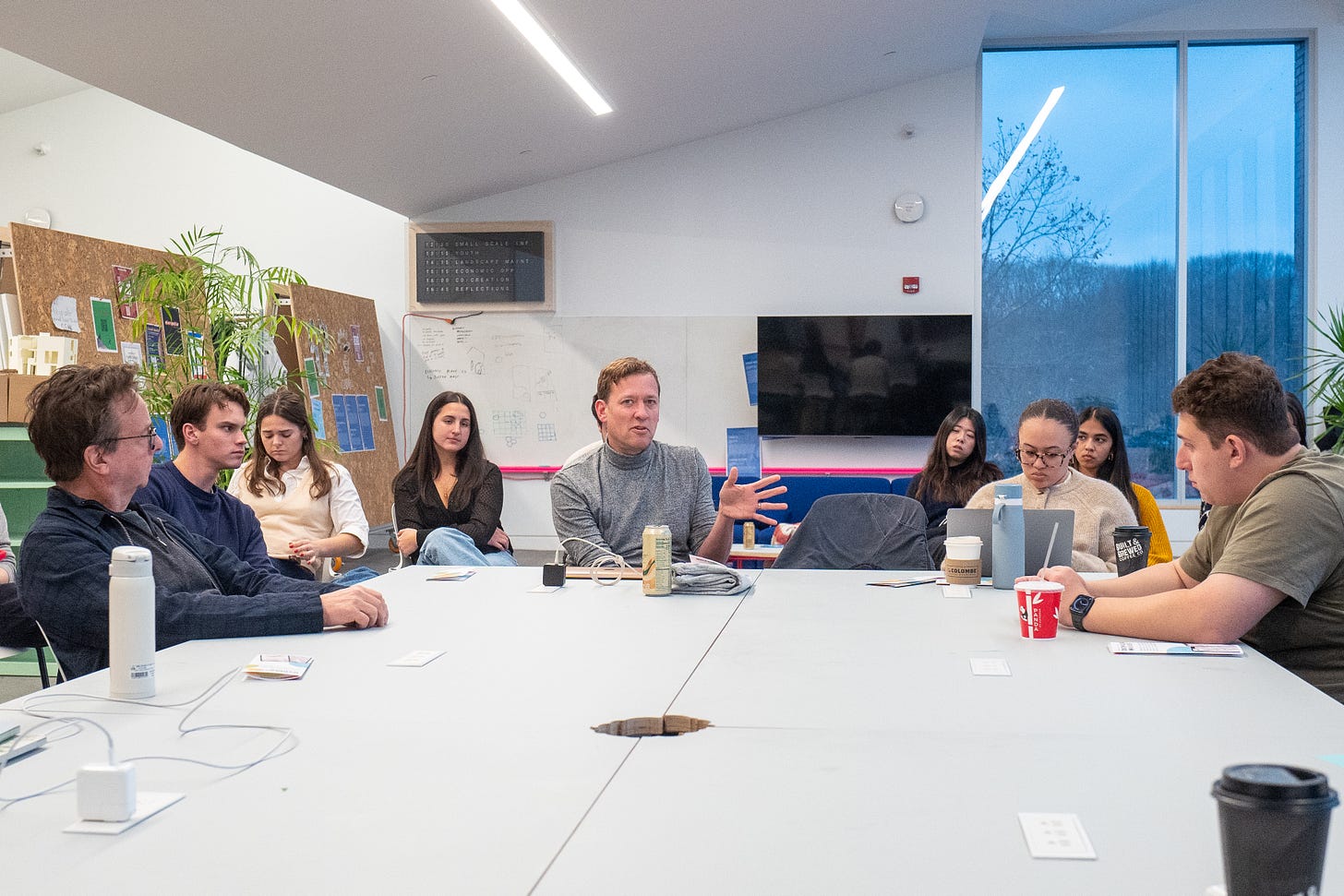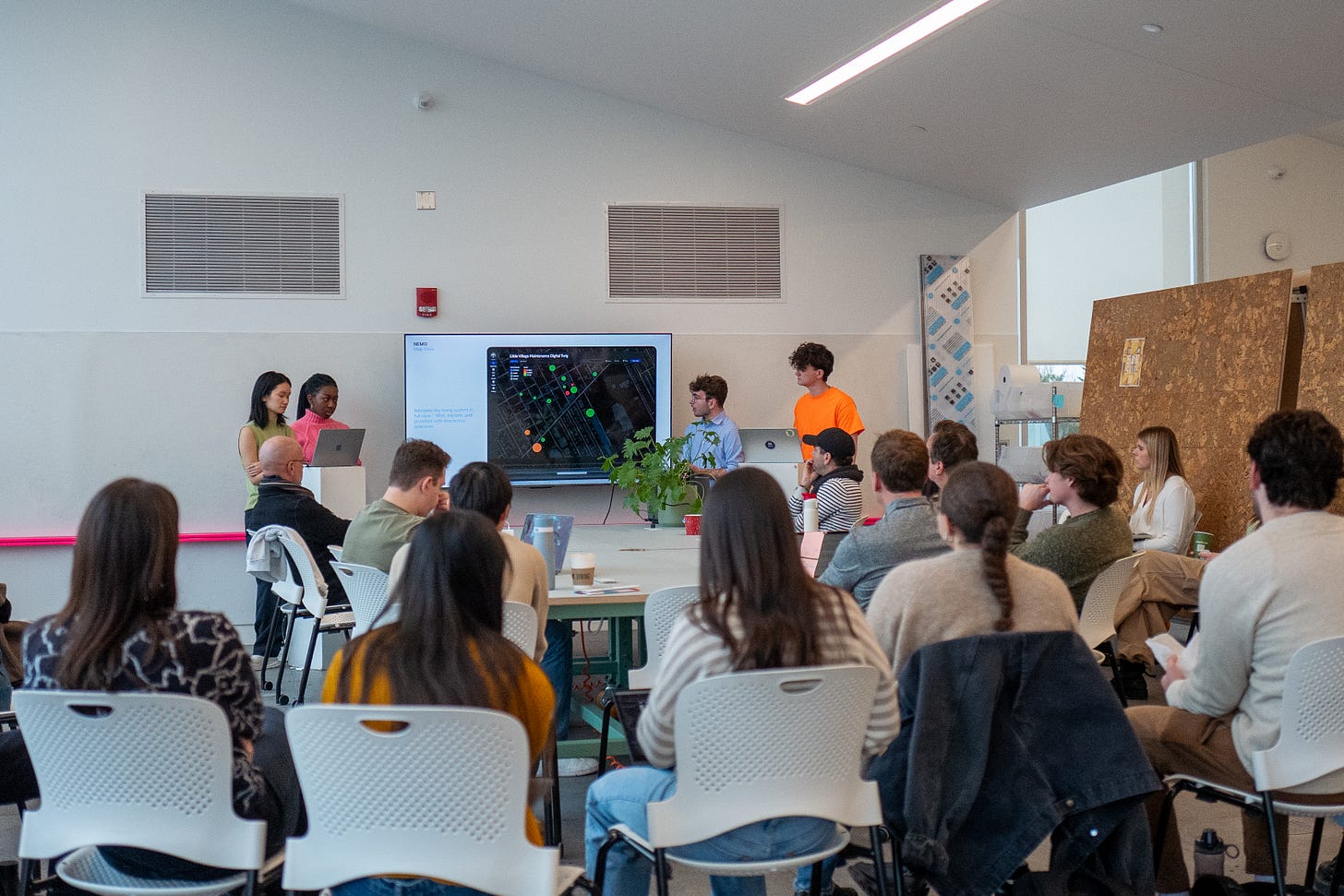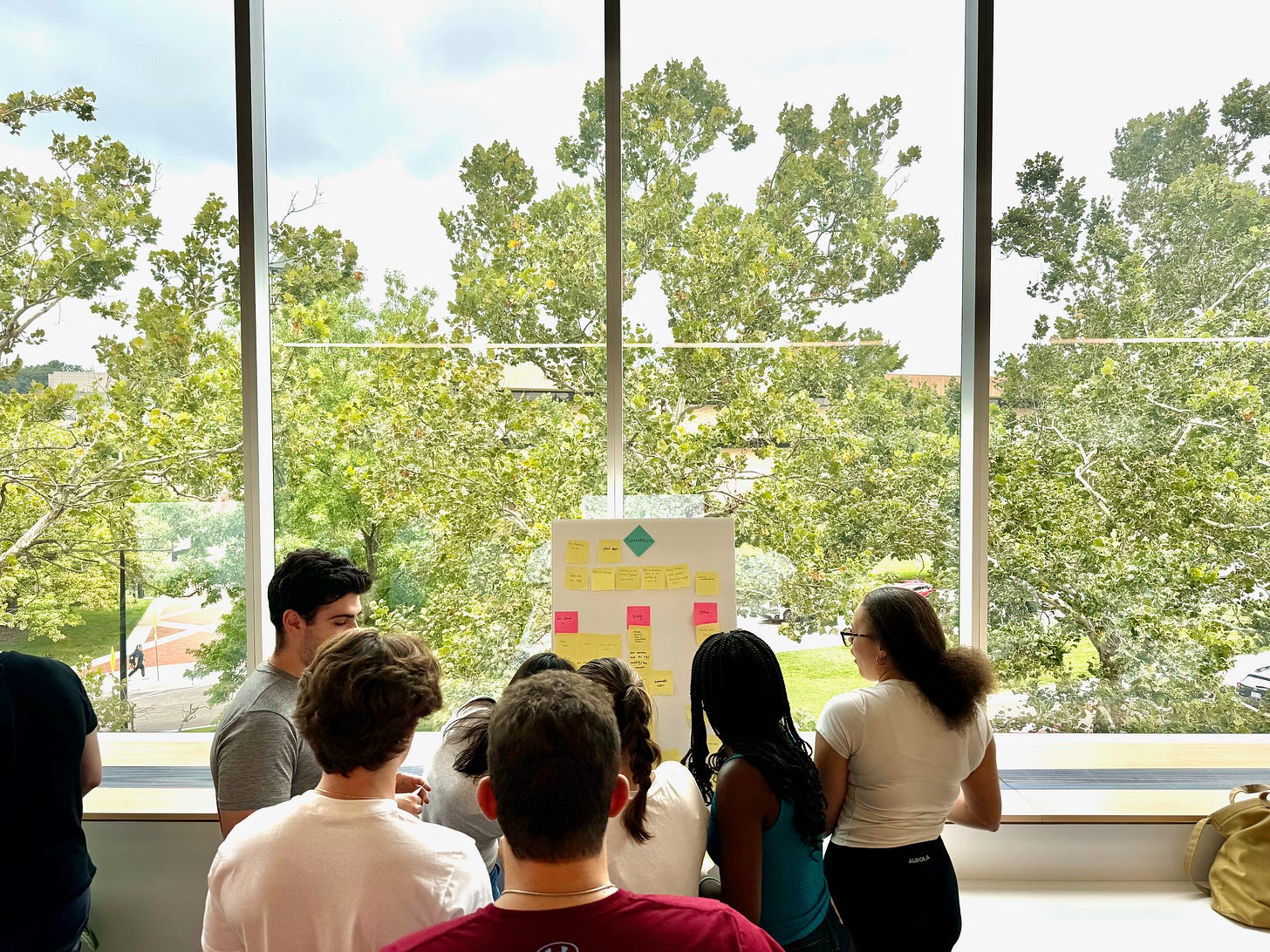Here’s a December 2024 question for you: do politicians change society or do citizens? The Overton Window of political possibility is a theory that politicians follow voters rather than lead them. If you want to see new political norms, the Overton Window says, change society first. The question is, if you want to slide the Overton Window to a new range of possibility, what exactly are you designing?
💬 Hello! This is the newsletter of the Urban Technology program at University of Michigan, in which we explore the ways that data, connectivity, computation, and automation can be harnessed to nurture and improve urban life. If you’re new here, try this short video of current students describing urban technology in their own words or this 90 second explainer video.
🪟 Strategic Design & Urban Systems
This week we held the final reviews for UT 430 Strategic Design & Urban Systems, which is the last of the design studio courses that we’ve created from scratch. Somehow, despite being involved in lots of other ways, it was the first time that I was at the front of the classroom in an official capacity as professor to the UT students.
The studio imagined urban technologies from the perspective of residents, community groups, and local business as an alternative to big tech being the default assumption the minute there’s a piece of code involved. When technology works in the public interest, or is locally sovereign, or is of moderate instead of infinite scale, how does that world look and feel? To orient this work I asked students to aspire to having a positive impact on the environmental sustainability, social justice, and/or humanity of daily life. They had to define the outcomes that would make change they consider positive and then figure out a strategy for manifesting it.
As a geographic backdrop and community context for these explorations, I asked the studio to focus on Little Village, which is an emerging arts-focused district on the east side of Detroit. Library Street Collective, an art gallery that has recently begun developing Little Village, generously shared their plans and allowed our students to imagine into the future of the Village.
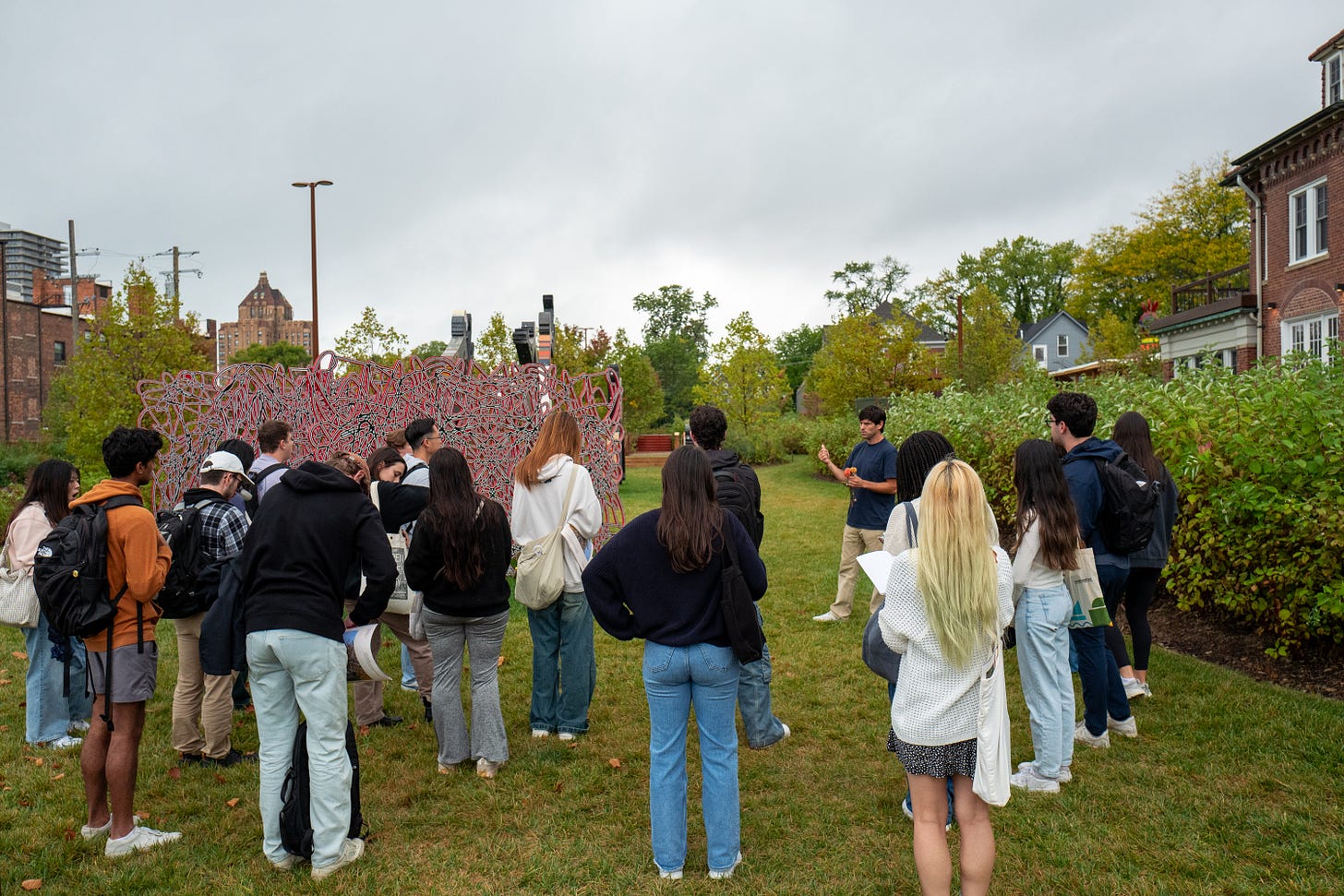
For the final deliverable students developed richly illustrated presentations that described and visualized a theory of change. Some of the projects were ‘icebergs,’ that proposed a future scenario in a high level of detail and specified the way products and services relate to organizational and structural factors such as incentives, roles, policies. Other projects were ‘snowballs’ that showed how small actions could roll into something larger. The slides and demos showed evidence of coding, UX, wayfinding, urban design, communications, organizing, entrepreneurship, and political maneuvering, but these were all in service to the goal of showing a strategy for change.
The hardest work this semester was problem finding: what’s worth addressing and feels plausibly within reach using available resources? Whereas many design studio courses start with a given medium (e.g. design a smart home device!) this one fixated on desired outcomes (e.g. more life on the street!) and asked what interventions would enable them. We also did not work for a “client,” but instead took it upon ourselves to imagine the coalition that was needed to make each of the projects happen. The strongest projects were the ones that proposed a compelling reason for a coalition to form and addressed the varied incentives for members of the coalition to work together.
Students formed groups around five themes: youth experiences, small scale infrastructure, maintenance of landscape and natural environments, economic opportunity for women, and co-creation and engagement. As Nick S. described at the final review, it got most interesting when we were able to see these five projects as a way of life in Little Village—aspects of one future, rather than alternatives.
To give you a concrete example, the Youth team sought to enhance the freedom of children to roam and explore despite the helicopter tendencies of today’s parents. The “system” in question here was a mix of physical interventions to repurpose disused alleyways as playscapes, new data collection and display technologies to help parents get a realtime sense of how busy the local area is, and a neighborhood organization to formalize latent goodwill into shared actions and revised expectations.
At one point Anthony Townsend, visiting from Cornell Tech as a juror for the final review, suggested that freeing helicopter parents to be more equanimous may involve separating the helicopter from the parent and introducing drones to provide more eyes on the street. Instead of the discussion in the review immediately descending into Black Mirror territory, there was a good back and forth about how much surveillance is stomach-able when the safety of children is the impetus.
This vibration on the edge between dystopia and utopia, actionable and imaginable, disruptive and familiar was a result of the students’ nuanced weaving of physical, digital, and organizational interventions into coherent narratives. I believe the thing that ultimately held us back from finding the work dystopic was that we saw tech being utilized as a wedge to open room for new socio-cultural relationships rather than a substitute for them.
Other group projects:
📚📈 Combining tactical urbanism with data collection to be able to prove the usage and need for more social infrastructure.
🌱🫂 Using plant sensors and AR games to invite the public into co-maintenance of planted landscapes. This project involved a working demo of a plant health dashboard.
♻️🙋♀️ Speculating as to the possibility of using burgeoning tourism in Little Village to bootstrap a circular economy that generates new opportunities for female entrepreneurs in the district.
💭🏙️ Creating a database of community desire that helps locals gain more leverage in urban development. This project involved a working demo that used an LLM to parse unstructured text and generate quantitative data in lieu of urban planning engagement meetings.
We engaged with the complexity of technical, social, economic, and political contexts of life in Little Village. We identified opportunity spaces and inflated them with plausibility. We applied a standard of “just enough” to the use of sensors, apps, and tech in general. We designed new normals, illustrated with day-in-the-life and user journey montages to make systems and experiences visible in relationship to each other. This studio was not a place to "make the most technically awesomest bus network eVeRRRRRR." Nor was it the students’ job in UT 430 to win Shark Tank. Projects were not pitched.
Each of the projects required that the audience take some leap to faith to imagine it working out without falling prey to bad actors or other threats. Across all five projects there was a background hum of data governance questions. Coalitions implied by the presentations were just that—implied—and would take serious effort to build. Technical details were explored and prototyped without being fully resolved. These kind of hesitations felt productive in the setting of an academic studio. I took it as a good sign when the projects made the reviewers feel genuinely unsure if they could be pulled off. The fact that the projects were not immediately treated as fantasy meant students were making things just outside the Overton Window feel enticing enough to stretch toward.
Thanks to the students for their efforts on these projects, Anthony Curis of Library Street Collective for sharing the Little Village initiative with us; to Delores, Paul, Anthony, John, Warda, and the other community members who shared their lives and perspectives with the students; and to our final review guests Alexa Bush, Justin W. Cook, Malcolm McCullough, Anthony Townsend, and Matthew Wizinsky for their wisdom and candor.
These weeks: photo shoot, hustling, finals, hiring, already gearing up for admissions season. Snow. Did you know the Overton Window was coined in Michigan? 🏃

